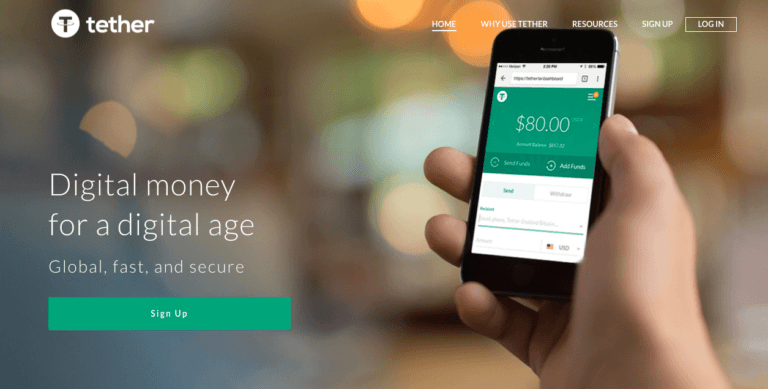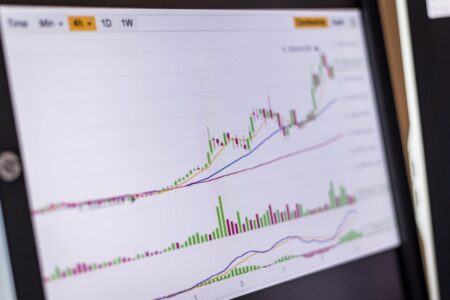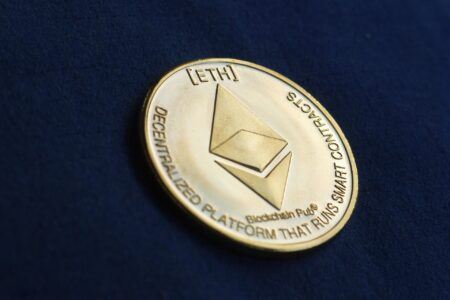The fiat-backed stablecoin Tether plays an increasingly important (and controversial) role in crypto trading. Some even have called it “the central bank of crypto trading.” Before we go any further, it is important to note that although many people incorrectly associate one tether with one U.S. dollar, in reality, the Tether platform does not support just the U.S. dollar. According to Tether:
“Tether initially supports US Dollars (USD), Euros (EUR), and soon Japanese Yen (JPY). Represented by ₮, tether platform currencies are denoted as USD₮, EUR₮, and JPY₮.”
However, since the bulk the tether tokens in circulation are those backed by U.S. dollars rather than euros. At press time, according to Tether website’s “Transparency” page, there ar roughly 2.5 billion of the former and 40 million of the latter. That’s why it is not too surprising to see in discussions of Tether, people making statements such as “one tether generally equals one dollar.”
Highlights From the WSJ Report
On Sunday (12 August 2018), Wall Street Journal (WSJ) presented a report on Tether, focusing on one of the main worries peple have, namely the fact that it is not very clear how much reserve holdings actually exist. In this article, we highlight some of the more interesting parts of this report:
- “Tether, whose main selling point is its tie to the U.S. dollar, has grown dramatically over the past year—its daily trading volume of around $3 billion trails only bitcoin’s $5 billion.”
- “Tether has also become a “crypto bank” for cryptocurrency businesses that have trouble maintaining real-world banking relationships, providing liquidity and a place to park assets, according to a new study from blockchain research firm Chainalysis.”
- “But Tether has never produced an audit showing it has the purported reserves. The company that controls tether maintains it has the reserves, yet it has never named the banks it uses to hold these funds, nor said where they are based and regulated.” (On its website, Tether says that its reserve holdings are “subject to frequent professional audits.”)
- “Last year, Tether hired accountants Friedman LLP, based in New York, to audit the reserves. The firm issued a preliminary report last year, but Tether says it released Friedman before a final audit was completed.”
- Leonardo Real, Tether’s chief compliance officer, told WSJ: “There’s nothing to hide here,” said Mr. Real. “It’s not three managers just cranking out money randomly in a dark basement somewhere.”
- “In June, Tether hired law firm Freeh Sporkin & Sullivan LLP, co-founded by former Federal Bureau of Investigation Director Louis J. Freeh, which issued a report stating that it believed tether had full dollar backing.”
- “In theory, demand drives new issuance. Cryptocurrency exchange Bitfinex places orders for new tokens with Tether and wires dollars or euros to the company’s bank account, according to both companies. Tether sends the newly created tokens to Bitfinex, which distributes them to investors.”
- “Investors have little visibility into the process. Bitfinex shares ownership and management with Tether, and it is the only entity through which Tether issues tokens.”
- David Gerard, the author of the book “Attack of the 50 Foot Blockchain”, told WSJ: “It’s sort of the central bank of crypto trading” even though “they don’t conduct themselves like you’d expect a responsible, sensible financial institution to do.”
- “Tether’s market value has risen steadily over the past 18 months, to $2.4 billion from about $10 million at the beginning of 2017. That has made it a crucial link in the wider cryptocurrency market.”
- “Tether-based trading volume grew more than 15-fold between October 2017 and March 2018, Chainalysis found. U.S. dollar-based trading volume, meanwhile, tripled in that same period.”
- “tether has become a key source of liquidity. At times this summer, tether has represented as much as 80% of bitcoin trading volume, according to research site CryptoCompare. When the year began, it accounted for about 10% of bitcoin trading volume.”
- Ding’An Fei, a managing partner at Ledger Capital, a digital asset management firm based in Beijing, told WSJ: “There are a couple of forces in this market that if they failed, it would be catastrophic. Tether is one of them.”
- “Chainalysis also found tether trading is increasingly concentrated among smaller, more speculative digital currencies, a sign it is being used as a tool of “pump-and-dump” schemes, in which traders hype an asset, causing its price to rise, before dumping it for a profit.”
Latest News
According to OmniExplorer, $50 million worth of Tether tokens were issued on 11 August 2018.
On 26 July 2018, the U.S. Securities and Exchange Commission (SEC), in the 92-page document explaining the reasons for its second disapproval of the Winklevoss Bitcoin ETF, raised its concern that Tether might be responsible for some of the manipulation of the Bitcoin market, citing a research paper by Finance Professor John Griffin and doctoral student Amin Shams from University of Texas at Austin, which stated that “Tether seems to be used both to stabilize and manipulate Bitcoin prices.”
Last month, during an interview with Ran Neu-Ner, CNBC’s Crypto Trader, at Korea Blockchain Summit 2018, the CEO of Binance, Changpen “CZ” Zhao, was asked about the impact of a Tether crash on Binance. This is what CZ had to say:
“We have seen fiat currencies go down in history a lot. Probably more times than they have been in cryptocurrencies. So yes, the concern is always there and that’s also why we’re listing other stable coins as well, so we actively promote other stable coins including True USD and others… I haven’t personally seen their bank accounts, but from a logical point of view they have so many profits from their regular exchange business, they don’t need to do anything crazy about the Tethering. I think the reason they cannot release their bank account details is because if they release whichever bank they’re using, then the bank account gets shut down”
Featured Image Credit: Image Courtesy of Tether









